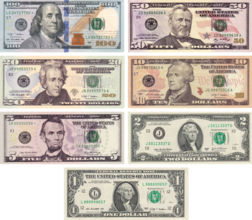**Historical Background and Development**:
– The U.S. dollar was historically linked to gold but has been a free-floating currency since 1971.
– The U.S. dollar was introduced alongside the Spanish-American silver dollar.
– The Spanish dollar, widely circulated from the 16th to 19th centuries, influenced U.S. coinage.
– The Coinage Act of 1792 defined the U.S. dollar based on the Spanish milled dollar.
– Spanish, Mexican, and American dollars remained legal tender until 1857, impacting U.S. coinage and the decimal system.
**Legislation and Establishment**:
– Article I, Section 8 of the Constitution grants Congress the power to coin money.
– The Coinage Act of 1792 authorized the production of various coins, including dollars.
– Laws in Title 31 of the U.S. Code prescribe the forms in which U.S. dollars are issued.
– The U.S. dollar is the unit of account of the United States.
– The U.S. dollar was designated as the country’s currency unit in Section 20 of the Coinage Act.
**Symbolism and Design**:
– Early U.S. currency did not feature presidents’ faces.
– Only deceased individuals’ portraits are allowed by law on U.S. currency.
– Portraits of presidents started appearing on currency in the 20th century.
– Images on U.S. currency carry symbolic meanings representing American values and ideals.
– The evolution of currency design reflects historical and cultural changes.
**Currency Features and Production**:
– The Federal Reserve System conducts the monetary policy of the United States.
– U.S. currency is printed by the Bureau of Engraving and Printing using specialized techniques.
– Currency paper is made of a unique blend of cotton and linen.
– Security features have been added to prevent counterfeiting on U.S. currency.
– Printing facilities for U.S. currency are highly secure to prevent unauthorized access.
**Global Impact and Usage**:
– The U.S. dollar is widely used in international transactions and serves as an important reserve currency.
– The U.S. dollar is a dominant currency in international trade.
– Exchange rates of other currencies are often compared to the U.S. dollar.
– U.S. currency plays a significant role in global economics, impacting global financial markets.
– Policies related to the U.S. dollar have a global influence.
The United States dollar (symbol: $; currency code: USD; also abbreviated US$ to distinguish it from other dollar-denominated currencies; referred to as the dollar, U.S. dollar, American dollar, or colloquially buck) is the official currency of the United States and several other countries. The Coinage Act of 1792 introduced the U.S. dollar at par with the Spanish silver dollar, divided it into 100 cents, and authorized the minting of coins denominated in dollars and cents. U.S. banknotes are issued in the form of Federal Reserve Notes, popularly called greenbacks due to their predominantly green color.
 Federal Reserve Notes (obverse) | |
| ISO 4217 | |
|---|---|
| Code | USD (numeric: 840) |
| Subunit | 0.01 |
| Unit | |
| Symbol | $, US$, U$ |
| Nickname | List
|
| Denominations | |
| Superunit | |
| 10 | Eagle |
| Subunit | |
| 1⁄10 | Dime |
| 1⁄100 | Cent |
| 1⁄1000 | Mill |
| Symbol | |
| Cent | ¢ |
| Mill | ₥ |
| Banknotes | |
| Freq. used | $1, $5, $10, $20, $50, $100 |
| Rarely used | $2 (still printed); $500, $1,000, $5,000, $10,000 (discontinued, but still legal tender); $100,000 (discontinued, not legal tender, and only used for specific purposes) |
| Coins | |
| Freq. used | 1¢, 5¢, 10¢, 25¢ |
| Rarely used | 50¢, $1 (still minted); 1⁄2¢, 2¢, 3¢, 20¢, $2.50, $3, $5, $10, $20 (discontinued, but still legal tender) |
| Demographics | |
| Date of introduction | April 2, 1792 |
| Replaced | Continental currency Various foreign currencies, including: Pound sterling Spanish dollar |
| User(s) | see § Formal (11), § Informal (7) |
| Issuance | |
| Central bank | Federal Reserve |
| Website | federalreserve |
| Printer | Bureau of Engraving and Printing |
| Website | www |
| Mint | United States Mint |
| Website | usmint |
| Valuation | |
| Inflation | 3.5% or 2.5% |
| Source | BLS (March 2024) or BEA (February 2024) |
| Method | CPI or PCE |
| Pegged by | see § Pegged currencies |
The monetary policy of the United States is conducted by the Federal Reserve System, which acts as the nation's central bank.
The U.S. dollar was originally defined under a bimetallic standard of 371.25 grains (24.057 g) (0.7735 troy ounces) fine silver or, from 1837, 23.22 grains (1.505 g) fine gold, or $20.67 per troy ounce. The Gold Standard Act of 1900 linked the dollar solely to gold. From 1934, its equivalence to gold was revised to $35 per troy ounce. Since 1971, all links to gold have been repealed.
The U.S. dollar became an important international reserve currency after the First World War, and displaced the pound sterling as the world's primary reserve currency by the Bretton Woods Agreement towards the end of the Second World War. The dollar is the most widely used currency in international transactions, and a free-floating currency. It is also the official currency in several countries and the de facto currency in many others, with Federal Reserve Notes (and, in a few cases, U.S. coins) used in circulation.
As of February 10, 2021, currency in circulation amounted to US$2.10 trillion, $2.05 trillion of which is in Federal Reserve Notes (the remaining $50 billion is in the form of coins and older-style United States Notes).
As of September 20, 2023, the Federal Reserve estimated that the total amount of currency in circulation was approximately US$2.33 trillion.
